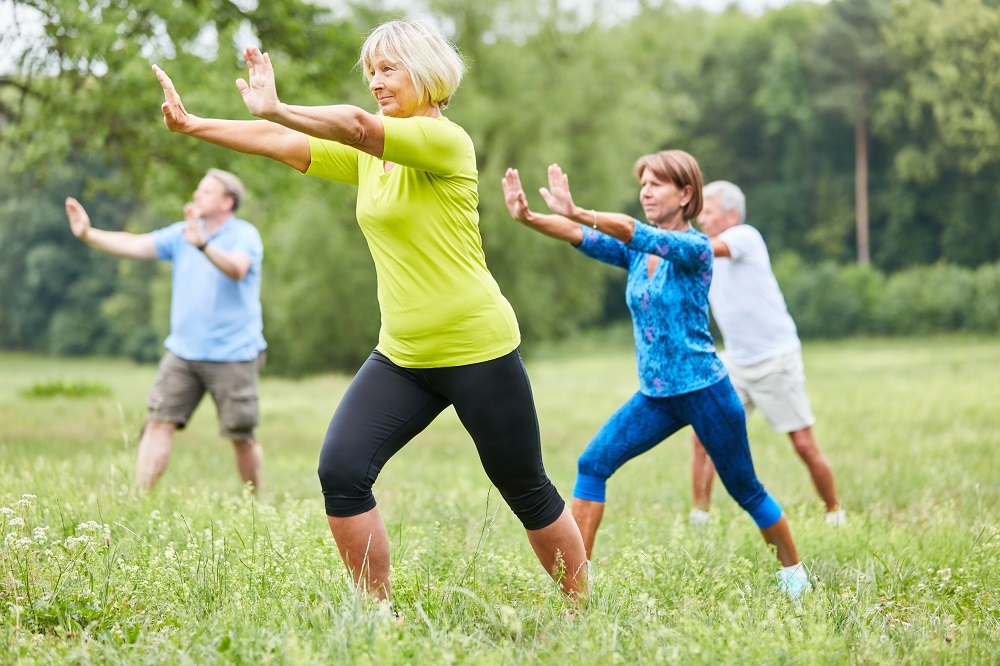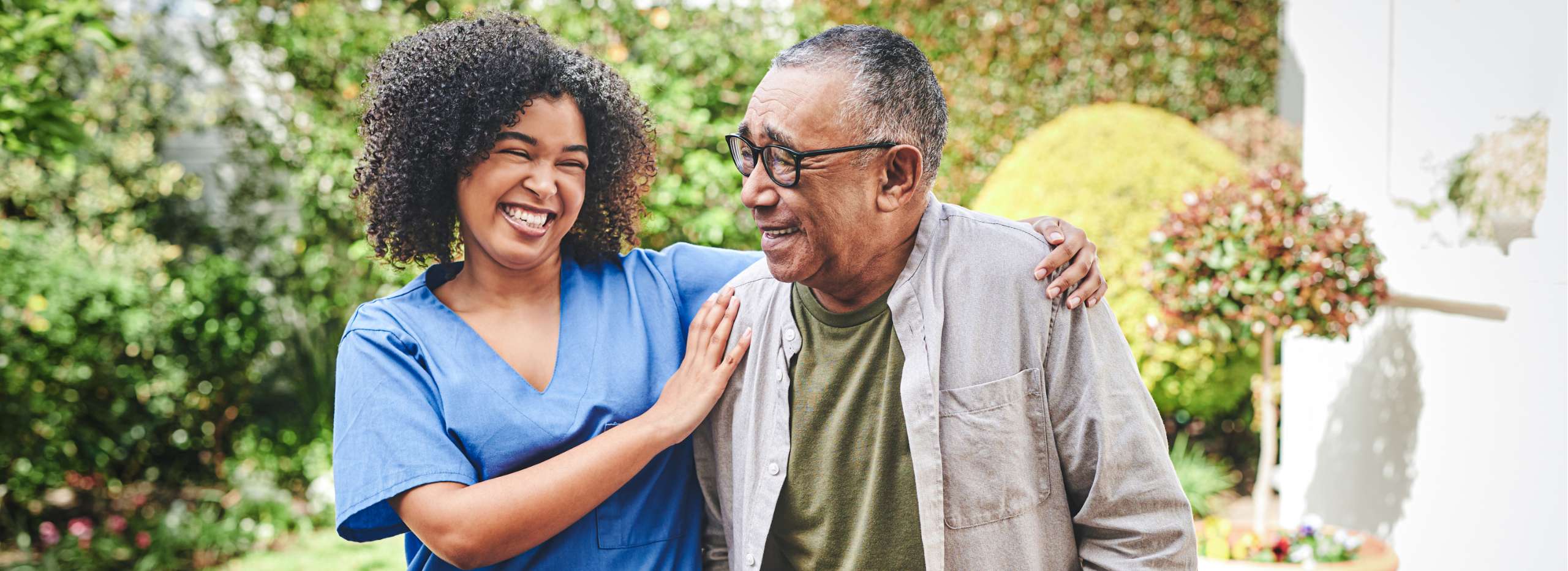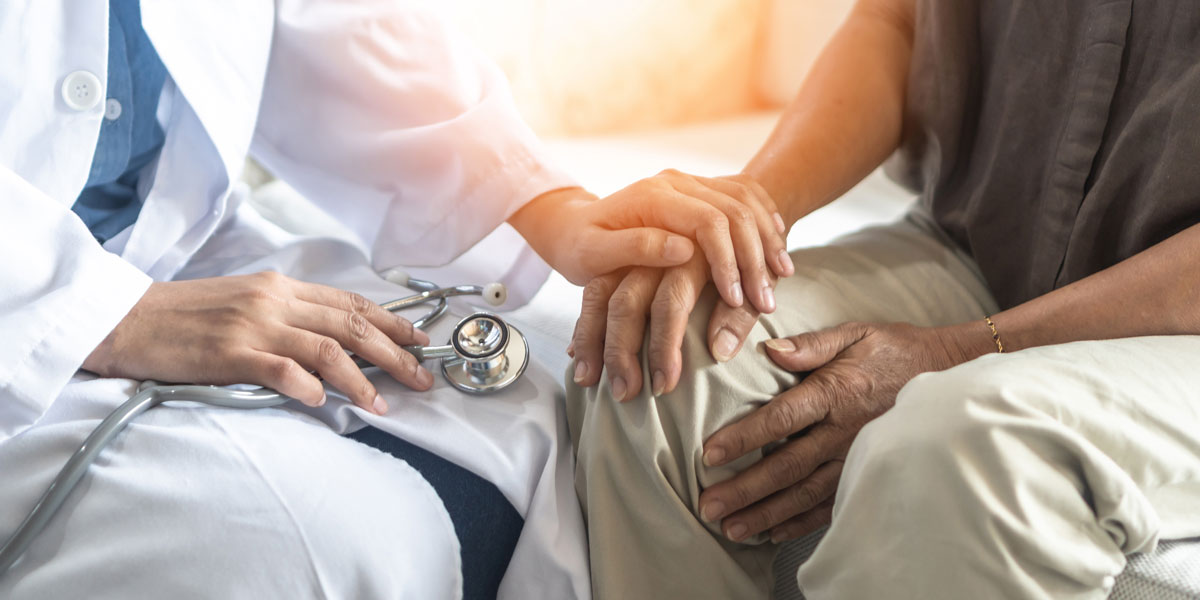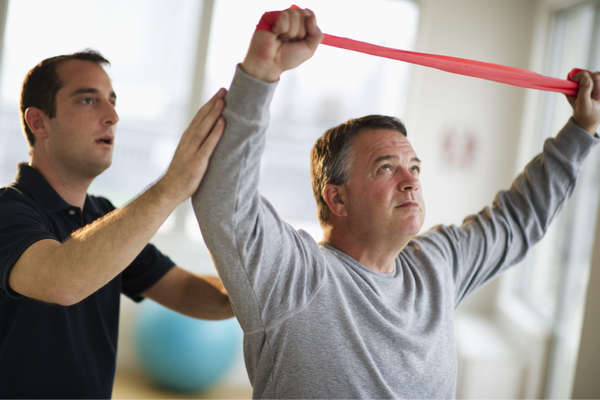After the early warning signs of Parkinson’s pass and you learn to navigate the world with Parkinson’s disease, staying active and agile will be one of your greatest advantages. By adding light movement and simple mobility exercises to your daily routine, you can maintain a higher level of independence and quality of life, regardless of whether or not you employ Parkinson’s home care services.
So, what are the best coordination exercises for Parkinson’s patients?
Your fitness plan should be created in tandem with your team of doctors, but these seven exercises are an easy entry point into increased exercise. We’ll go over some basic coordination exercises and activities to help Parkinson’s patients mitigate symptoms and improve their overall quality of life.
#1 Walking
Any amount of exercise is good for the body and mind—even a slow stroll around the building. Walking is especially valuable because it can help counteract one of the primary symptoms of Parkinson’s disease: difficulty walking and the feeling that your feet are stuck to the floor. By practicing slowly and steadily, you can maintain or regain your coordination skills.
Beyond that, walking has numerous benefits:
- It’s a low-impact activity and can be done in nearly any setting, making it an easy exercise to fit into your schedule.
- It works the muscles in your legs, thighs, and lower back, helping to strengthen them and to avoid the shuffling gait that can be typical in Parkinson’s patients.
- It can help improve your posture and strengthen your back muscles against the stooped posture that some patients develop.
- It can improve the flexibility of your lower body
- It can boost or maintain your overall stamina.
Walking is also highly adaptable and there’s no wrong or right way to do it, as long as you maintain proper form. You can set your own pace. You can walk on a treadmill or outdoors. You can also advance to jogging if you feel up to it or alternate between the two. As long as you feel safe—it’s best to walk or jog alongside a friend just in case—then there are no rules as to how long or how fast you walk, or where you explore.
#2 Cycling
Cycling is another low-impact option you can try, especially if you have a need for speed. Cycling can improve the coordination of Parkinson’s patients by:
- Strengthening your legs and back muscles, which are often underworked in patients with mobility difficulties
- Requiring more focus on your quadriceps and core, helping your overall sense of balance
- Strengthening the soft tissues and joints in your lower body which can help you avoid stiffness or tight muscles
- Demanding in-sync arm and leg movements and ongoing balance
For your safety, you should try to find a place to cycle that is smooth and free of debris like a track. Stationary bikes are also a safe option, especially for amateur cyclists, since they take away the possibility of a crash.
If you’re unable to or apprehensive about cycling on your own, you can also consider tandem cycling with a friend or caregiver as this has been shown to similarly improve motor function.1
#3 Yoga
Yoga is a beneficial and invigorating practice for anyone looking to improve strength, balance, flexibility, and coordination. And yoga is varied enough in its exercise that it can serve as a full-body workout. For Parkinson’s patients, some of the benefits may include:
- Reduction of muscle rigidity
- Overall posture improvement
- Reduction in the severity of tremors
- Better balance and coordination, which will help reduce fall risk
- Overall improvement in gait and motor function
In addition to these physical benefits, the focus on breathing and mindfulness can help from a mental and emotional standpoint as well. Yoga can improve relaxation and mood, reduce stress levels, and even help cope with a diagnosis.
If you’re new to yoga, there are plenty of classes for beginners. Some patients may also benefit from aquatic yoga as the low-impact weightlessness may make it easier to move and the warmth of the water can improve circulation.
#4 Tai Chi
Tai chi is an ancient form of martial art, but you won’t be using it to fight anyone. Instead, most modern uses of tai chi focus on slow, controlled movements and intentional breathing. This type of activity can be very useful for a Parkinson’s patient for many reasons:
- The movements require an intentional activation of muscles which strengthens several individual muscle groups without the stress of high-impact activity.
- It improves balance and can help patients regain solid footing, which subsequently helps reduce the risk of falls.
- It has been shown to reduce the rate of motor decline.2
Tai chi can easily be adapted to someone’s strength and flexibility levels—much like yoga, you can make it both challenging and achievable for yourself. In addition, the focus on breath, like in yoga, can serve as meditational, reducing stress and improving a patient’s emotional state.
#5 Swimming
Swimming or aquatic exercise can be a safe, beneficial option for Parkinson’s patients as the water provides a level of buoyancy that can make some movements more achievable than they would be on dry land.
Other benefits of swimming include:
- Tension relief in muscles and joints, which helps to encourage smoother movements
- Increased strength, stamina, and overall cardiovascular health
- A sense of freedom and relief that has an emotional as well as a physical benefit
If you do choose to swim, it’s important to take the necessary steps to ensure your safety. Always swim with a friend or as part of a group in case any accident occurs. If you’re swimming in an area where a lifeguard is on duty, it’s a good idea to inform them of your condition so they can immediately notice and correct any potential issues or emergencies.
#6 Dance
Dancing is all about moving and grooving—with some manner of balance and coordination, that is. If you’re comfortable shaking and shimmying, dancing is a great coordination exercise. Beyond that, it’s fun.
It also provides a couple of other unique benefits:
- It’s social – For someone who might otherwise feel nervous or ashamed because of their disease, dancing presents the perfect opportunity to interact with others and focus on the movement, the music, and the fun—nothing else.
- It’s exercise-adjacent – Dancing is an excellent form of exercise but it doesn’t exactly feel like it. Patients who are turned off by exercise regimens and fitness plans may be more willing to participate in something like dance.
- It’s individualized – You can take it at your own pace (and show off your favorite moves!) while reaping the benefits like improved balance, strength, endurance, and overall mobility.
#7 Fine Motor Exercises
Full-body coordination is imperative when managing Parkinson’s disease, but that doesn’t mean we should forget about fine motor movements, which are key to normal daily activities.
Some of the most beneficial exercises include:3
- In-hand manipulation – Moving small items like golf balls or marbles around in your hand can improve your fine motor skills. Be sure to work items both clockwise and counter-clockwise for full benefit.
- Finger isolation – From simply moving each finger around individually to activities like playing the piano, finger isolation can help you maintain strength and dexterity in your fingers which are essential for many daily tasks.
- Dynamic activities – Sewing, manipulating nuts and bolts, and even picking up flat items off a table without sliding them are examples of dynamic movements which can help your fine motor skills.
There are plenty of options for fine motor coordination activities and you can easily cater your exercises to the activities you like to do. Try needlepoint, drawing or coloring, knitting, scrapbooking, or even board games like chess and checkers to combine engaging cognitive activities with physical development exercises.
Why Exercise Matters
Will exercise really make a difference in my symptoms? When dealing with a disease like Parkinson’s, you might be skeptical of what will be able to make a difference in your disease progression. But it’s been shown that exercise is effective in improving patients’ balance, mobility, and ability to perform normal daily activities.
It can help you with everyday and specialized motor abilities in numerous ways including:4
- Improving your gait
- Improving your balance
- Minimizing the effects of tremors
- Enhancing your flexibility
- Strengthening your grip
- Helping your overall motor coordination
No matter how physically fit you currently are, you’ll see benefits when you engage in coordination exercises like these. Patients who exercise just two and half hours per week have shown a smaller decline in mobility and quality of life over the course of two years.
Of course, exercise isn’t a cure-all, but it can be a key component to living your best life with Parkinson’s.
Alliance Homecare is Here to Help
Living with Parkinson’s can be difficult and while exercise can help, you may need more support still. Whether you need therapists or home aides to help you with your daily exercise or more intensive in-home nurse care, our trained staff is here to help. We’re ready to provide the support you need so you can live with the highest possible quality of life.
Talk to us today to find out how we can support you—with exercise assistance and far beyond.
Sources:
- Frontiers in Neurology. Dynamic High-Cadence Cycling Improves Motor Symptoms in Parkinson’s Disease. https://www.ncbi.nlm.nih.gov/pmc/articles/PMC4557094/
- The New England Journal of Medicine. Tai Chi and Postural Stability in Patients with Parkinson’s Disease. https://www.nejm.org/doi/full/10.1056/NEJMoa1107911
- University of Florida Health. Fine Motor Coordination Activities for Patients with Parkinson’s. https://movementdisorders.ufhealth.org/2012/10/26/fine-motor-coordination-activities-for-patients-with-parkinsons/
- Parkinson’s Foundation. Neuroprotective Benefits of Exercise. https://www.parkinson.org/Understanding-Parkinsons/Treatment/Exercise/Neuroprotective-Benefits-of-Exercise




